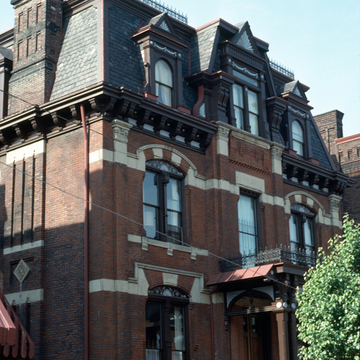You are here
Houses on Liverpool Street
Laid out in 1832, Manchester was already an important industrial center by the time it became part of Allegheny City in 1867. This block is one of the most impressive in Pittsburgh and the focus of one of the largest National Register Historic Districts in the city. At 1423 Liverpool Street, ironmaster James Anderson built c. 1830 a two-story, five-bay brick house with a central hall and a two-story pedimented portico that overlooked the Ohio River. The house recalls an era of almost unimaginable calm before men such as
The decline of industry and the building of PA 65, which severed Manchester from other parts of the North Side, contributed to the severe decline of the neighborhood in the twentieth century. Since the late 1960s, however, the Manchester Citizens Corporation (MCC) and Pittsburgh History and Landmarks Foundation (PHLF) have played key roles in neighborhood revitalization. The PHLF rehabilitated most of the buildings on the north side of this block in the late 1960s in a program that later involved hundreds more homes throughout Manchester. The MCC continues to lead Manchester's redevelopment through initiatives designed to replace the neighborhood's dilapidated public housing with new units for sale and rental, and overseeing necessary social and community services.
Writing Credits
If SAH Archipedia has been useful to you, please consider supporting it.
SAH Archipedia tells the story of the United States through its buildings, landscapes, and cities. This freely available resource empowers the public with authoritative knowledge that deepens their understanding and appreciation of the built environment. But the Society of Architectural Historians, which created SAH Archipedia with University of Virginia Press, needs your support to maintain the high-caliber research, writing, photography, cartography, editing, design, and programming that make SAH Archipedia a trusted online resource available to all who value the history of place, heritage tourism, and learning.















